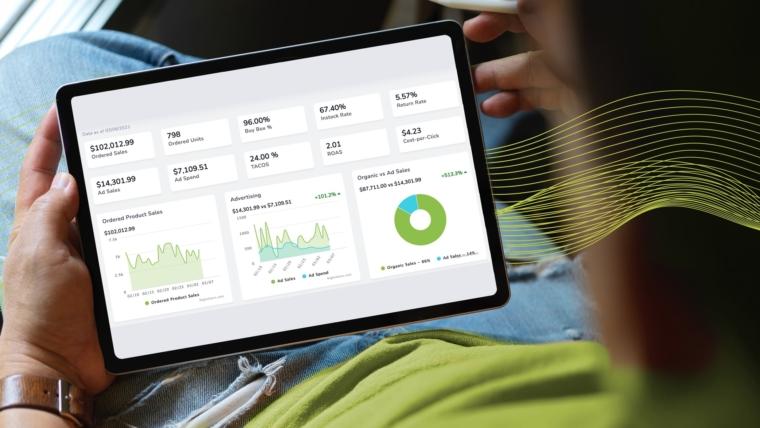
We have all seen the stats: online sales of CPG have grown 10X faster than the overall industry in the past year. In the next five years, 20% of shoppers will buy groceries online. This rapid growth stems from three dynamics: consumers are ready to adopt this behavior change, the technology and infrastructure are starting to be available to support food e-commerce, and retailers are providing omnichannel solutions. In fact, the F&B industry is already the fastest growing e-commerce sector projected to reach $60 billion or more.
There are already many food e-commerce success stories, and winning online can lead to offline sales growth as well. For example, Nutpods is a non-dairy creamer that launched its direct to consumer business on Amazon in 2015. In 2018, the brand expanded nationwide in brick-and-mortar retail and is now poised to be one of the top-selling items in the creamer category. At HINGE COMMERCE, many of our large established food clients are driving enormous brand growth with e-commerce B2B foodservice solutions. B2B e-commerce is a huge whitespace opportunity for many companies, offering a way for foodservice manufacturers to expand the reach of their full catalog while giving restaurants and operators easy access to specialty ingredients and unique flavors.
But, building a profitable e-commerce business is not easy. Manufacturers and retailers often underestimate what it takes to succeed in e-commerce. To win online, brands need to evaluate their organizational readiness on three vectors:
1) INFORMATION: Do you have access to the right data to ensure informed decision-making about the market potential and the competitive landscape? Do you have a rigorous and continuous competitive benchmarking process on product assortment, pricing, and packaging? Bear in mind that unlike brick-and-mortar, the competitive set is not defined by shelf adjacencies in your plan-o-gram, but rather, the other products that appear at the top of the product search. One must also consider that consumer purchase decisions in e-commerce are often made at the item level (i.e., the UPC, SKU or ASIN level) rather than at the brand level.


2) STRATEGY: Are your product sourcing, lead times, and supply chain sufficient to meet the logistical challenges in e-commerce? Ensuring high product availability is preferable to having an extensive or complicated assortment, so optimizing your online catalog to those items that can be reliably fulfilled could be the right strategy. Additionally, your offline and online product assortment and pricing strategies should be synchronized to ensure integrated efforts and to avoid one channel undermining the other.
3) EXPERTISE: Does your organization have the specialized skills and focus necessary to fully leverage each of the different online channels? There are different skills required to manage the brand’s own site, partner with the top omnichannel retailers, and optimize performance on global marketplaces. For example, over 50%of marketplace e-commerce sites like Amazon are driven by third-party sellers (many of whom are unauthorized resellers). As such, managing marketplace e-commerce should always involve instituting MAP compliance and removing unauthorized sellers. It’s important to take control of your brand given that 50% of all product searches start on Amazon – more people are searching on Amazon for your products than on your own website.
E-commerce is the land of opportunity for the food industry! This journey may feel daunting because of the breadth of existing product offerings, challenging logistics, and the potential impact on offline sales. It is important that brands use data to make a knowledge-based decision on whether e-commerce is right for them, and which platforms and partners to use.
HINGE COMMERCE can help. We can provide your business with insights about the e-commerce landscape for your category, identify the subcategories with the best business opportunity for your brands, and show you the steps to win. Don’t avoid e-commerce simply out of fear. Let us prepare a market analysis for your foodservice business to share insights on the potential that e-commerce could hold for your brands.
Message me to learn more, or reach out to us at contact@hingecommerce.com




